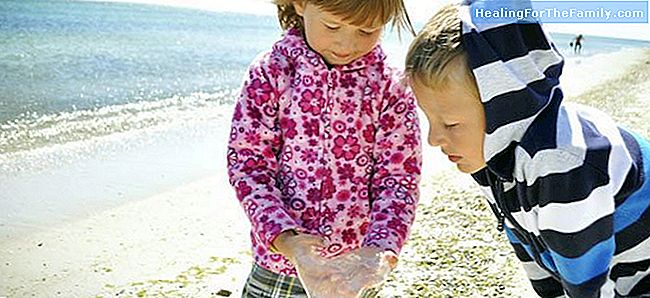How to treat jellyfish stings in children
Summer is the ideal time for children to enjoy playing on the beach. The whole family spends unforgettable moments in the sea swimming and making sandcastles, but it is true that there are some risks on the beaches . The sunburn and jellyfish stings are the most frequent problems children face in su
Summer is the ideal time for children to enjoy playing on the beach. The whole family spends unforgettable moments in the sea swimming and making sandcastles, but it is true that there are some risks on the beaches.
The sunburn and jellyfish stings are the most frequent problems children face in summer.
How to treat jellyfish stings in children

We will not tire of repeating that a perfect beach day can be ruined if we do not take proper precautions with children. Sunscreen is absolutely essential so that they do not burn and are protected, but there are other factors that we can not prevent in any way. There come into play the jellyfish.
Jellyfish are becoming more frequent on our beaches. Those little animals that look charming in the drawings, have a powerful toxic with which they protect themselves as soon as they sense the danger. And the truth is that their casi almost transparent appearance makes it very difficult to locate them before they act with their bite. It is true that a jellyfish sting does not present risks for children, but besides being
very painful , it can be complicated by dizziness and vomiting if thechild is allergic or if he suffers from asthma or atopic dermatitis. That is why it is convenient to act as soon as possible, but it is also not necessary to be alarmed. Treating jellyfish stings in a child
The
sting of a jellyfish is most painful, so the child will surely become very nervous. We must try to reassure them and the most important thing is not to rub the bite with a towel, because we would be promoting the poison of the bite. Neither sand nor fresh water poner should be added, since fresh water destroys the toxic cells of the jellyfish causing it to spread throughout the skin. It is betterto wash the area
where the jellyfish has chopped with salt water or saline and you can also put ice on a handkerchief to alleviate the pain a little. If there are traces of the tentacles of the jellyfish on the skin, they can not be touched, because the poison is still acting, but they must be removed with a pair of tweezers. It is best to go to the beach prepared with some emergency kit for these cases of jellyfish stings or for a small beach accident. In any case, it does not hurt to go to the aid station on the beach or to a health center so that the jellyfish sting is treated by a medical professional. Generally, the child will have to take antihistamines
and we must be very attentive to any reaction to the bite . In most cases, the jellyfish sting remains in an anecdote that will sting the child for a few days. Laura Vélez.Editor of Guiainfantil.com












